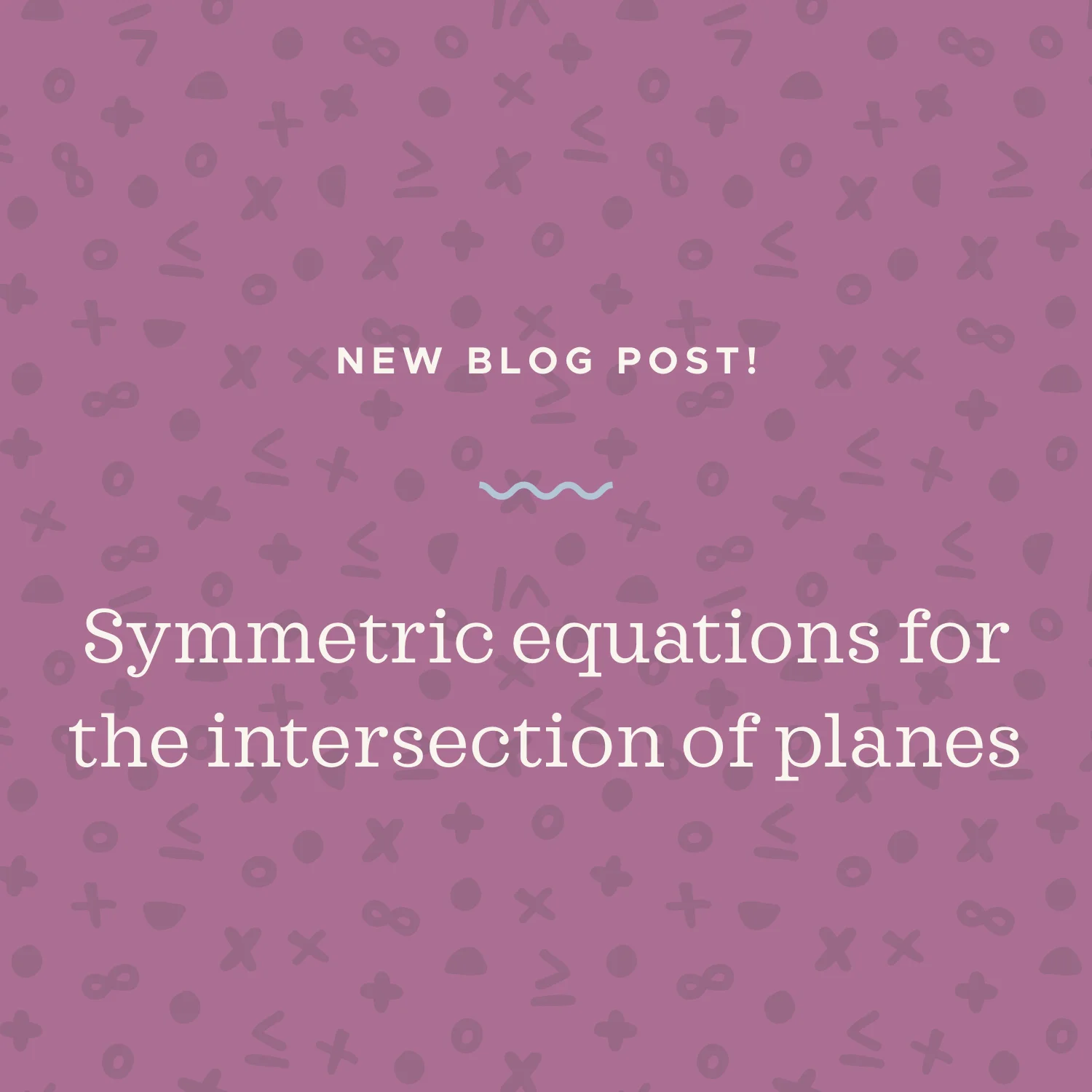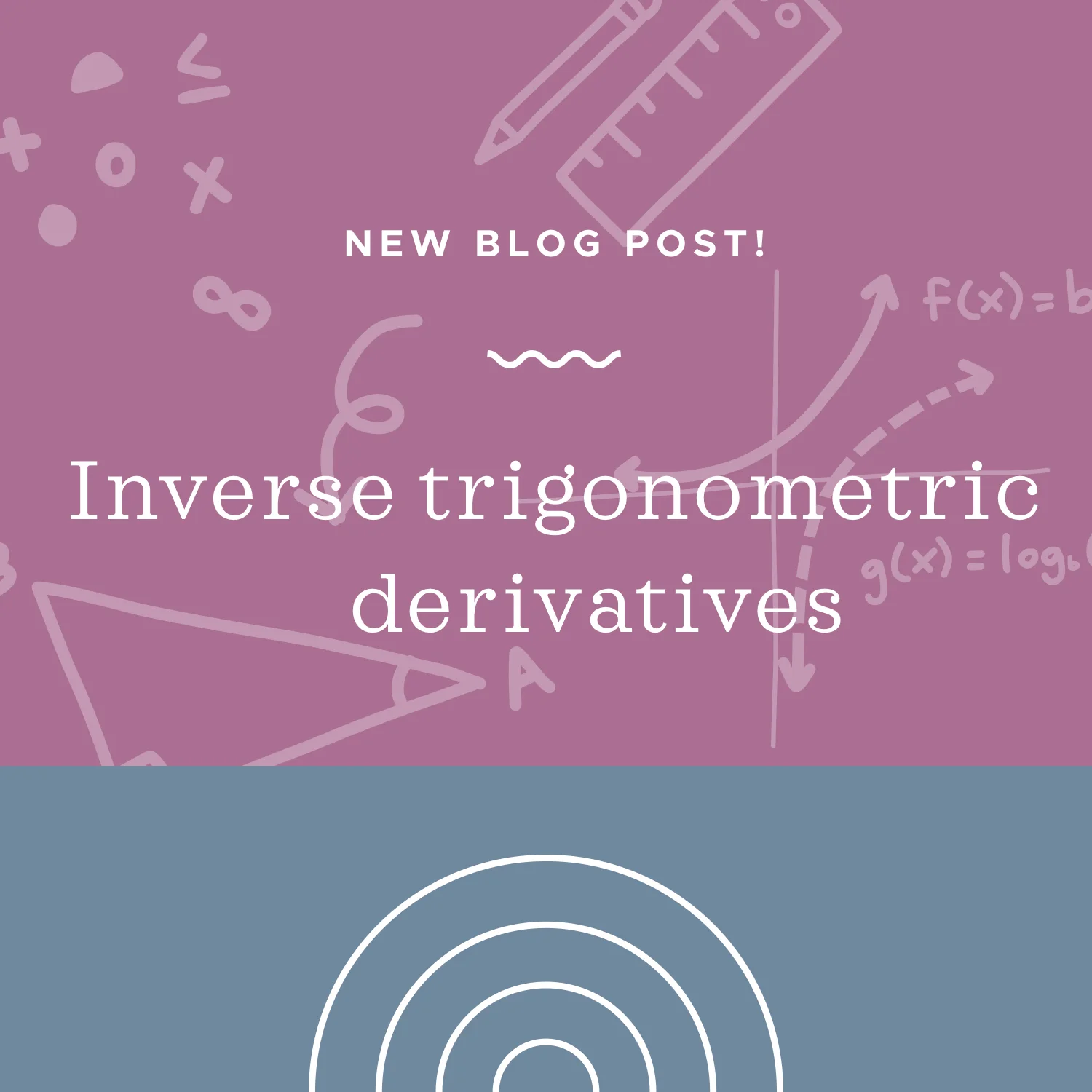You’re usually given a position equation x or s(t), which tells you the object’s distance from some reference point. This equation also accounts for direction, so the distance could be negative, depending on which direction your object moved away from the reference point.
Read MoreIf you need to find the sum of a series, but you don’t have a formula that you can use to do it, you can instead add the first several terms, and then use the integral test to estimate the very small remainder made up by the rest of the infinite series. The sum of the series is usually the sum of the first several terms, plus a very smaller error that you can estimate.
Read MoreA common multiple of two positive whole numbers is a number that’s divisible by both of them. Their least common multiple is the smallest number that’s divisible by both of them.
Read MoreMeasures of central tendency are different ways we’ve come up with to describe the “middle,” “center,” or most typical value of the data. They include the mean, the median, and the mode, and we need to know how to find all three.
Read MorePopulation systems are always cooperative, competitive, or predator-prey. We’ll talk about how to determine the kind of system we have, and how to solve predator-prey systems for their equilibrium values.
Read MoreFinding derivatives of a multivariable function means we’re going to take the derivative with respect to one variable at a time. For example, we’ll take the derivative with respect to x while we treat y as a constant, then we’ll take another derivative of the original function, this one with respect to y while we treat x as a constant.
Read MoreIf two planes intersect each other, the curve of intersection will always be a line. To find the symmetric equations that represent that intersection line, you’ll need the cross product of the normal vectors of the two planes, as well as a point on the line of intersection.
Read MoreTo avoid confusion between negative exponents and inverse functions, sometimes it’s safer to write arcsin instead of sin^(-1) when you’re talking about the inverse sine function. The same thinking applies to the other five inverse trig functions.
Read MoreWe’ll look at how to add and subtract fractions that have variables in them as well as numbers. We’ll start by finding a common denominator from the factors of each of the individual denominators.
Read MoreTo solve an equation that has parentheses in it, start by simplifying both sides of the equation by distributing any coefficients in front of the parentheses. Then follow order of operations to simplify further and solve for the variable.
Read MoreThe population of a species that grows exponentially over time can be modeled by a logistic growth equation. This type of growth is usually found in smaller populations that aren’t yet limited by their environment or the resources around them.
Read MoreIf the original function is the product of three functions, then its derivative is the sum of three products. If the original function is the product of four functions, then its derivative is the sum of four products.
Read MoreWhy use subscripts instead of different variables? Well, the variables in science often represent something specific. For example, P stands for pressure and in some equations you’ll have more than one pressure represented. In that case we use subscripts: P_1, P_2, P_3, and so on.
Read MoreThe orthogonal trajectories to a family of curves are the curves that intersect each member of the family at a perfectly perpendicular angle. So given a family of curves, you can change the value of the constant in the equation that models the family, to create a family of many curves, and then sketch the family in the plane.
Read MoreIf two planes intersect each other, the intersection will always be a line. The vector equation for the line of intersection is calculated using a point on the line and the cross product of the normal vectors of the two planes.
Read MoreMost integrals need some work before you can even begin the integration. They have to be transformed or manipulated in order to reduce the function’s form into some simpler form. U-substitution is the simplest tool we have to transform integrals.
Read MoreThe definition of the derivative, also called the “difference quotient”, is a tool we use to find derivatives “the long way”, before we learn all the shortcuts later that let us find them “the fast way”.
Read MoreTo solve simple equations, start by thinking about what’s happening to the variable.
Read MoreMixing problems are an application of separable differential equations. They’re word problems that require us to create a separable differential equation based on the concentration of a substance in a tank.
Read MoreTo say whether the planes are parallel, we’ll set up our ratio inequality using the direction numbers from their normal vectors.
Read More





















